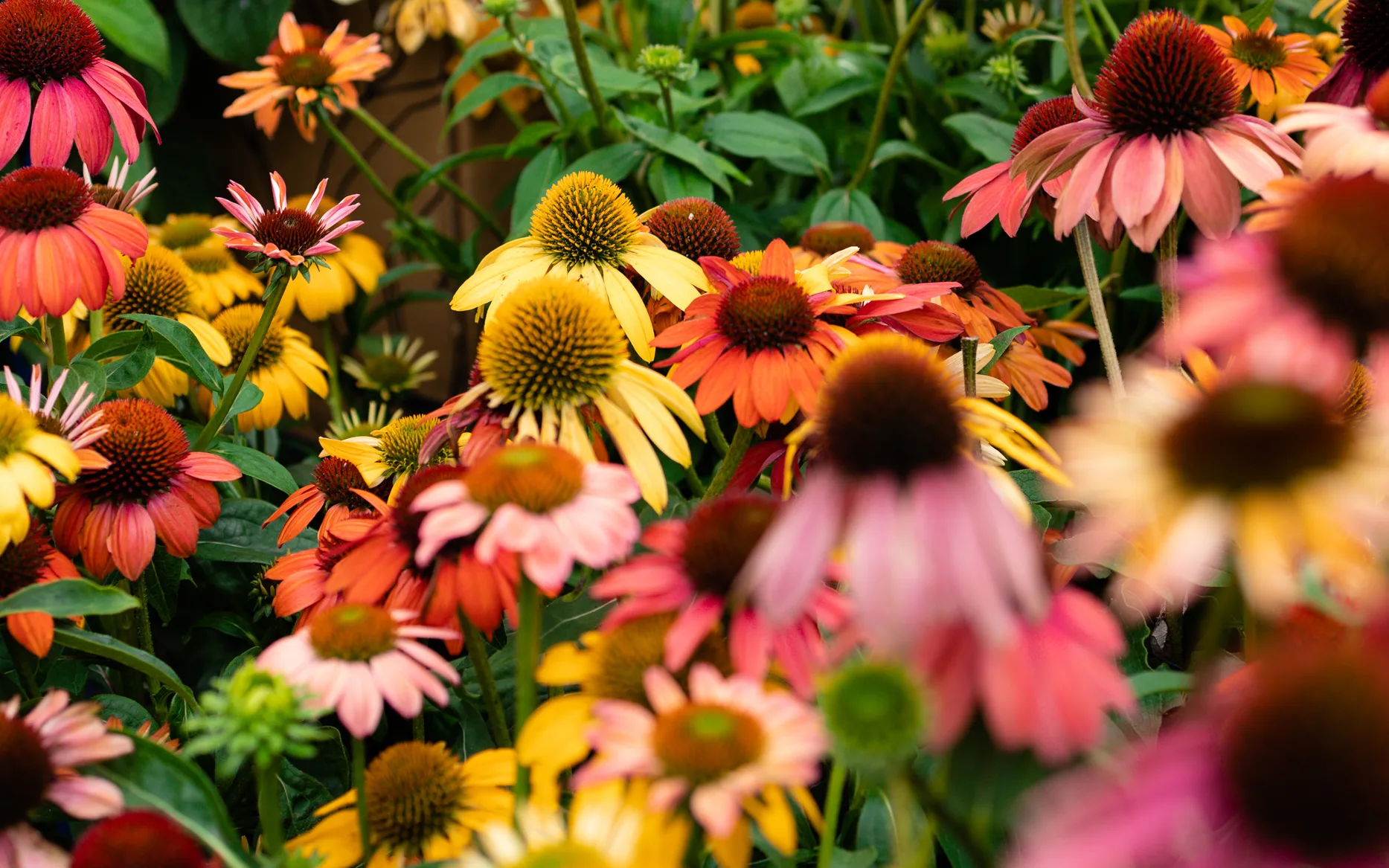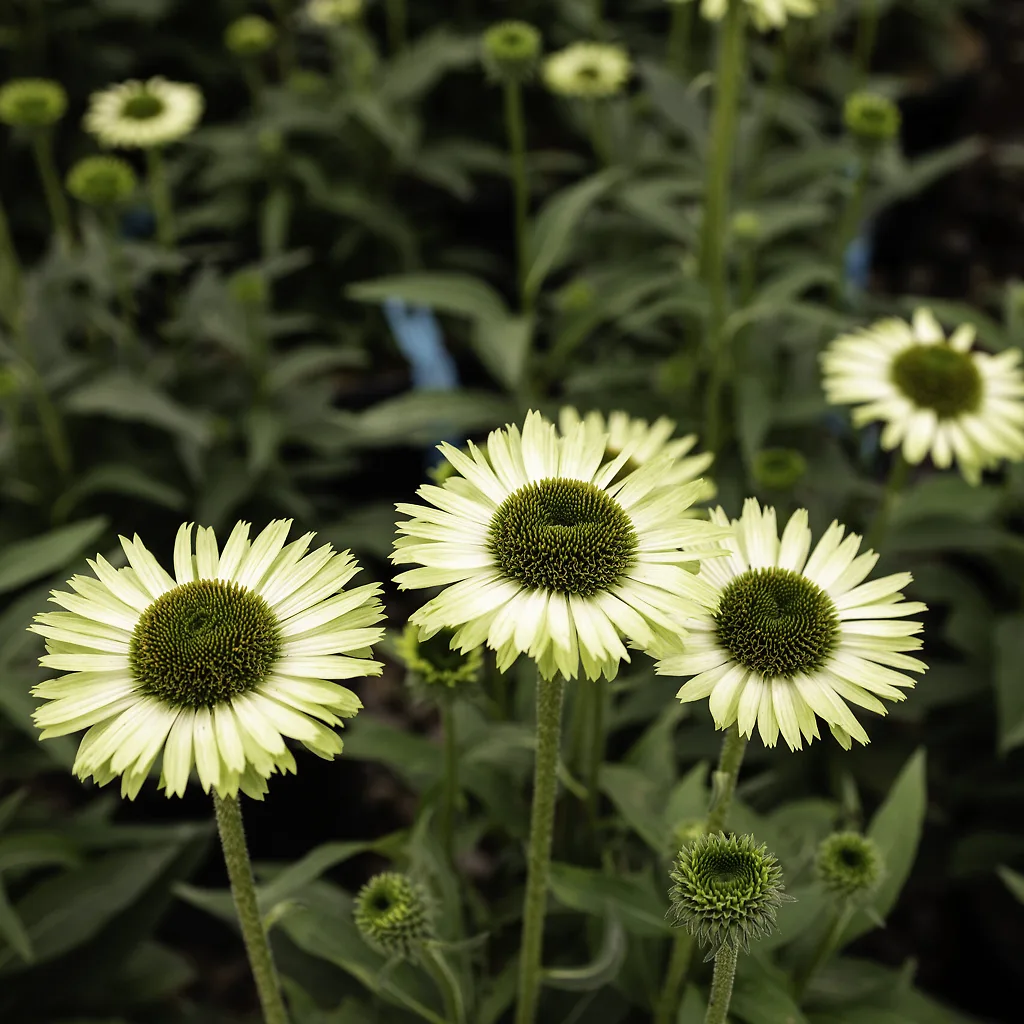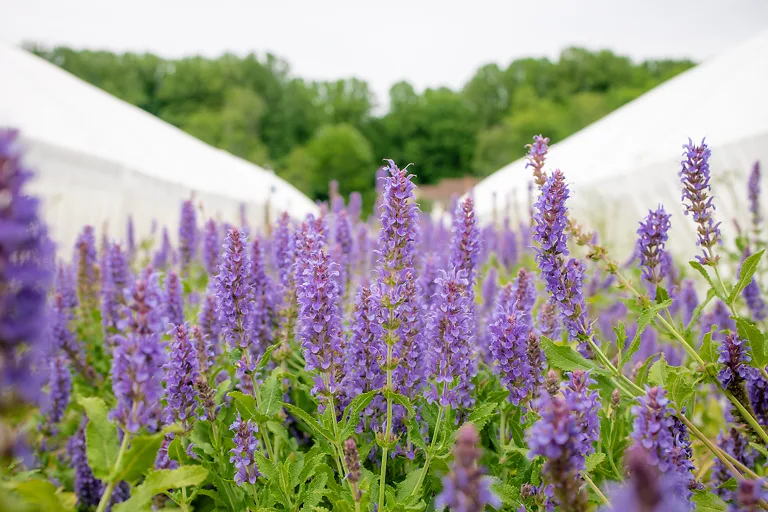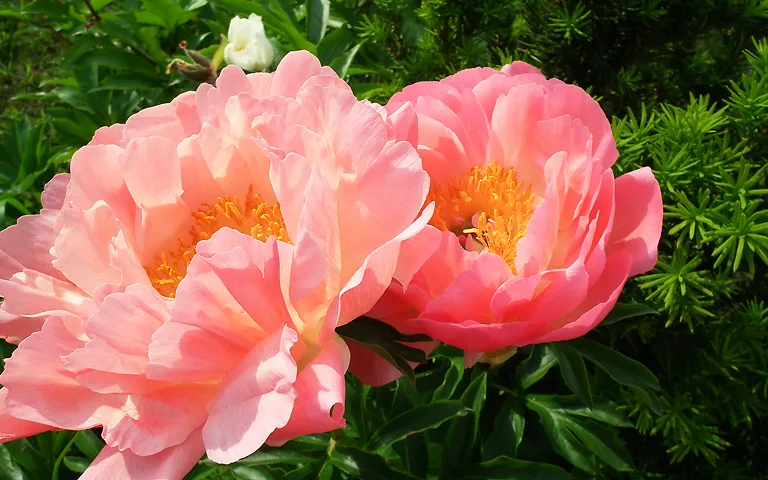
Written by s • Coneflowers – Flowers of the Prairies for every Garden
The prairies are deeply embedded in the American psyche, even for people who live a thousand miles from them. Accounts of settlement and Native American hardship can complicate things, but one thing remains true – they are a remarkable ecosystem of grasses, flowering plants and grazing animals, that once covered vast areas of North America. Much of them have been lost, but as humans always do, we plucked some of the best parts, and keep them today in our gardens.
The Purple Coneflower
Among the top garden plants we have transplanted from the prairies into our gardens is the coneflower, Echinacea purpurea. One of ten similar species, it is widespread throughout the east, from Canada southwards, always growing in grasslands, and it has proven itself to be the easiest and most durable. If you are interested in wild flowers, then the other species are all attractive and sometimes available as plants or seeds. All of them have purple to pink petals, except for Echinacea pallida, with near-white petals, and Echinacea paradoxa, which is yellow. Echinacea extracts have been marketed as cures for everything from the common cold to cancer. Sadly, little or no evidence has been found in trials that they actually work as medicines – but they do work wonders in our flower beds.
The Purple Coneflower is a herbaceous plant which dies down each winter to re-sprout from the roots the next spring. Perennial plants like this are so useful in the garden for adding a richness – and blooms – that shrubs and trees don’t do, or do only for a couple of weeks of the year. They can be grown in a separate flower bed – a lovely garden feature, but one that requires some skill and attention to do well. Much easier is to place them in shrub beds – along the front, or grouped among them – and here flowers like the Purple Coneflower that bloom later in the summer are perfect, since so many shrubs will have bloomed earlier. Clumps thrive for years, and once they are older they can be divided in early spring or early fall to create more, so you can spread them around the garden.
The typical ‘wild-type’ Purple Coneflower grows to about 4 feet tall once it is well-established, with a narrow, upright form that takes up very little room. The oval leaves have a dry, slightly hairy feel, and are dark green. They cluster at the base of the plant, and also grow along the branching flower stems. The flowers are 3 to 5 inches across, and they have a pronounced central cone of spiky flowers with no petals, giving this plant its name and making it quickly recognizable. Around this cone is a circle of narrow, purple petals. The flowers are popular with bees and butterflies, and even with hummingbirds, and the seeds that develop by fall are enjoyed by seed-eating birds.
Easy to grow, the Purple Coneflower thrives in even poor soils, but grows best and flowers longest in richer but well-drained soils. It enjoys the sun and heat, as long as the soil isn’t too dry for too long, but it is drought resistant too. Usually free of pests and problems, this truly is an easy plant to grow, and one every garden needs. As a design element, though, it has a problem. Many of us notice the drooping petals – even more pronounced in some of the other species – and many find it gives the flower a slightly ‘sad’ look. Not what we want in the garden. So it didn’t take long for breeders to get to work, and this problem was soon solved. Today, if you don’t want the original form for a natural garden or a prairie re-creation, there are lots of forms where the petals stand out horizontally, droop-free, and all the better for it.
Purple Coneflower Varieties
With most of our trees and shrubs, special varieties must be reproduced from pieces of the original plant, normally by rooting cuttings or making grafts. Increasingly today it is done in labs, in test tubes, by the process called ‘tissue culture’. With many perennials, though, it can be normal, or at least common, to grow them from seeds, the way most of our annual flowers, like petunias or impatiens, are grown. When we look at the Purple Coneflower we find both seed strains and varieties grown from one parent plant, so let’s see what’s on offer.
Green Jewel Coneflower

Green flowers have become super-fashionable in the cut-flower world, and also in gardens, where they have become the ‘new white’ for garden design. Jade and lime greens are really desirable, and in coneflowers we have an outstanding one. The Green Jewel Coneflower has horizontal petals that are an incredible jade-green color and a green, not brown central cone. The effect is as striking in a vase as it is the garden. Growing only 2 feet tall this variety has exceptionally large blooms, a full 5 inches across, and keeps on coming right into fall, especially if you dead-head as the flowers fade. We have this plant thanks to the famous European perennial expert Piet Oudolf, whose new approach to using perennials created what we would see as a ‘modern’ garden. Early this century, among a batch of seedlings he was growing at his nursery, he spotted one that was green, and Green Jewel was born. It doesn’t grow from seed, and must be grown by careful division of plants, or by tissue culture, so it can be hard to track down.
Cheyenne Spirit Coneflower
The principle of creating new varieties from seed is relatively simple. Grow a lot of seedlings, perhaps of mixed species, and let them make seed. Collect the seed, grow it, and throw away all but the best seedlings. Repeat. Sounds easy, but in reality it takes a lot of time, and a good eye for what mixture to start with, and what to keep.
Seed-growing firms are notoriously secretive, but this was probably the way geneticist and breeder Dr. Ping Rem did it. She is Senior Plant Breeder for PanAmerican/Kieft Seeds at their Elburn, Illinois farm. The great thing about this coneflower is that it comes in a range of colors, and few things are as attractive in a summer garden as a drift of coneflowers in shades of reds, purples, oranges and golds – exactly what you get with ‘Cheyenne Spirit’. Again the petals are held outwards, not drooping, and they are broad, making a very full flowers on compact plants a couple of feet tall. Because they are grown from seed you never know exactly what color you have until they bloom – a surprise, but always a good one. This variety is ideal for planting in semi-natural places, in groups, or for a bed just of coneflowers.
Pow Wow® Coneflower Series
PanAmerican Seeds also have European connections, and of course Europe is a big force in the world of plants. With a Dutch firm called Florensis they have developed two great small coneflowers not much more than 18 inches tall, and with flowers that don’t droop. Again grown from seed, here you do know what you are getting, because there are two distinct strains, one with purple flowers, called Wild Berry (‘Pas702917’) and a white one called, guess what, White (‘Pas702918’).[It’s relatively easy to keep white flowers pure from seed, since they don’t carry any genes for any other color.] White is always a good addition to your beds, and if you want pure purple, look no further than these great small plants for modern small gardens.







